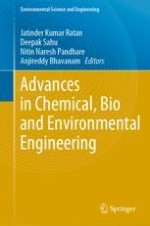This book focuses on the state-of-the-art research, development, and commercial prospective of recent advances in chemical sciences. The innovative work in the field of Environmental Engineering, Bio-chemical Engineering, Chemical Engineering, Nanotechnology, Environment Impact Assessment, Green Technologies. The contents in this book cover various design concepts and control and optimization for applications in Chemical, Bio and Environmental Engineering, manufacturing, Physics, Chemistry and Biological sciences. This book will be useful resource for researchers, academicians as well as professionals interested in the highly interdisciplinary field of Chemical, Bio and Environmental Engineering.
